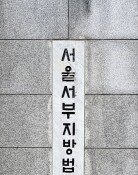Caution is needed against N. Korea’s ploy of escalating military conflicts
Caution is needed against N. Korea’s ploy of escalating military conflicts
Posted January. 06, 2024 07:45,
Updated January. 06, 2024 07:45
On Friday morning, the North Korean military launched approximately 200 coastal artillery shells in the northern region of Baengnyeong and Yeonpyeong islands in the West Sea. The artillery shells fired by North Korea did not cross the Northern Limit Line (NLL) but landed within the maritime buffer zone where artillery fire and maneuver training are explicitly prohibited under the Sept. 19 inter-Korean military agreement. North Korea, having officially renounced the agreement in November, has escalated its provocations by engaging in actual artillery fire. In response to the situation, our military took urgent measures, evacuating residents from Yeonpyeong Island and Baengnyeong Island, and imposing restrictions on the movement of certain ships. Additionally, Marine units on both islands mobilized self-propelled artillery and tank guns to conduct maritime shooting exercises in a calibrated response to the provocations.
The firing of coastal artillery by North Korea in the West Sea appears to be a deliberate provocation aimed at escalating military tensions between North and South Korea right at the beginning of the new year. During last year's plenary meeting of the Workers' Party, Chairman Kim Jong Un characterized inter-Korean relations as a hostile relationship between the two countries and issued directives for a high-pressure and offensive ultra-hardline response. Furthermore, Kim convened his key military commanders to recognize the potential for an armed conflict arising from the enemy's reckless provocations and be fully prepared for military readiness.
There is a significant likelihood that perilous military actions, ranging from displays of force to localized provocations, will become more frequent in the future. Immediately following the nullification of the Sept. 19 Agreement, the North Korean military deployed troops and heavy weaponry into the Demilitarized Zone (DMZ) and initiated the restoration of frontline guard posts. More recently, there has been an intensive placement of land mines along the Gyeongui Line land route, which is a symbol of inter-Korean exchange and cooperation. In addition to land and sea provocations, such as the restoration of guard posts and coastal artillery fire, there is a possibility of aerial provocations. Reports suggest that North Korea is actively employing a substantial number of new drones, such as the ‘Saebyeol-4 Type,’ over Pyongyang, conducting infiltration training against South Korea through the use of drones.
The dangerous provocations by the North Korean military, aligning with Kim Jong Un's strong-versus-strong confrontation and fight against enemy principles, pose a significant threat that could escalate into an imminent crisis on the Korean Peninsula. Particularly noteworthy is Kim’s directive to make the possibility of armed conflict a fait accompli, indicating a clear intention to heighten provocations in the lead-up to the general elections in April. It is imperative for our military and government to be well-prepared. While a firm response to military provocations is essential, it is also crucial to possess flexible response capabilities that can manage crises without succumbing to North Korea’s confrontation drive.







